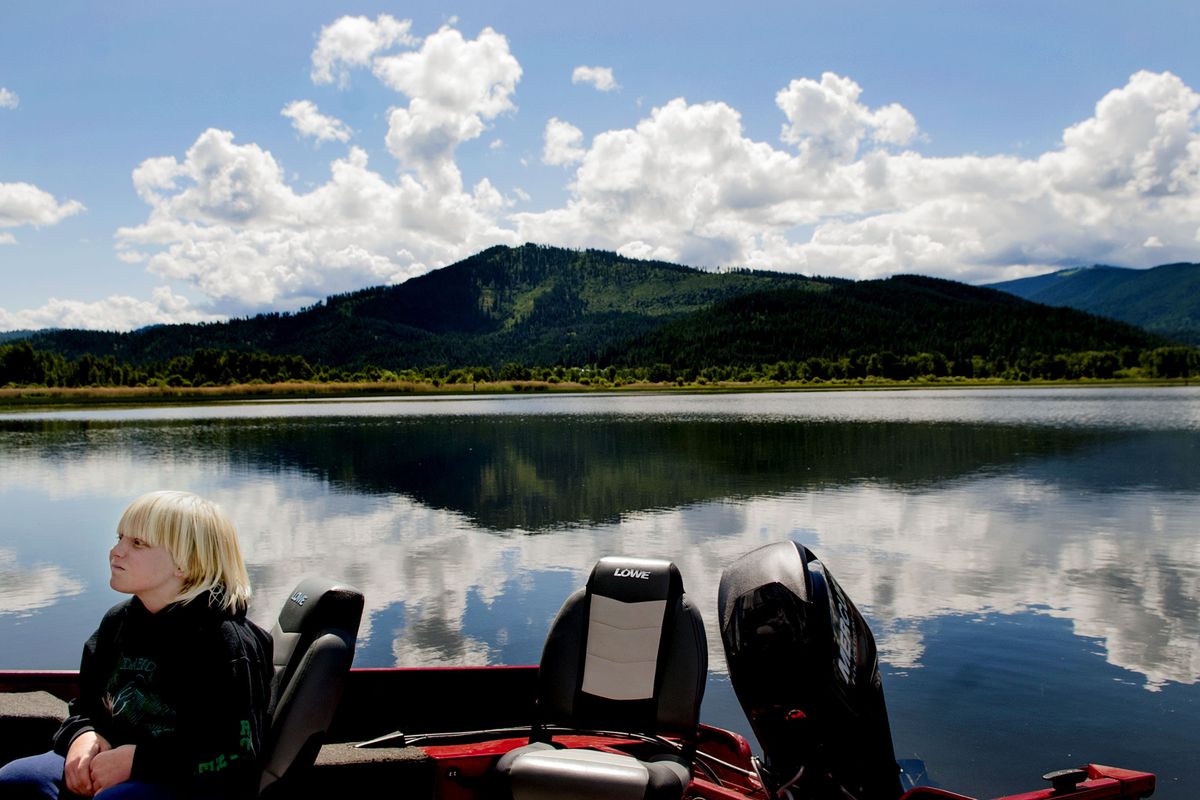‘Play Clean’ reminds North Idaho lake users of lead danger

Andy Helkey recently took his 10-year-old daughter kayaking at Killarney Lake.
Afterward, father and daughter ate a picnic lunch. But first, they washed their hands to reduce their risk of lead exposure.
The marshy lake along the lower Coeur d’Alene River is so polluted from historic mining waste that tundra swans die each spring from ingesting lead in the lake’s sediments.
But if people take simple steps to avoid exposure, Killarney Lake’s calm waters can still be a great place for a 10-year-old to practice her paddling strokes, or for other family outings, said Helkey, the Panhandle Health District’s lead health program manager.
“Practicing good hygiene is the best way to protect yourself from lead,” he said.
One of North Idaho’s most beautiful recreational corridors is also the nation’s second-largest Superfund site. Each year, thousands of people visit the Coeur d’Alene River and the scenic chain lakes connected to it for fishing, boating, bird-watching and cycling on the Trail of the Coeur d’Alenes.
Not all of them know that a century of mining waste from Idaho’s Silver Valley has washed down the Coeur d’Alene River system or that many of the sandy beaches are polluted with lead, arsenic and cadmium.
The “Play Clean” campaign – launched this year by the Panhandle Health District and the Idaho Department of Environmental Quality – encourages people to enjoy the area while protecting themselves and their kids from heavy metals.
“We’re a community that values outdoor recreation, so we’re taking the educational approach,” said Denna Grangaard, a public outreach analyst for the Idaho DEQ.
Additional signs will go up this summer at boat launches and trail heads, reminding people to wash their hands before eating and to eat at picnic tables or on blankets. New brochures will be available, too.
People are exposed to heavy metals through breathing or swallowing contaminated dust, Helkey said. So, wearing a dust mask while riding an ATV or motorcycle in the Coeur d’Alene Basin protects both kids and adults, he said.
Playing on grassy areas, instead of dirt or sand, is better for young kids who frequently have their hands in their mouths.
It’s also important to avoid tracking dust and mud into vehicles and houses.
“Shake things out and brush off the dog before you leave the site,” Grangaard said.
In adults, long-term lead exposure has been linked to higher blood pressure and anemia, according to the U.S. Centers for Disease Control and Prevention. For young children, lead exposure can result in decreased mental ability, learning and behavior problems and reduced growth.
Since the 1970s, the Panhandle Health District has been tracking blood lead levels in Silver Valley kids. To reduce the risk of childhood lead exposure, more than 7,000 residential and commercial properties in the valley have had their yards replaced with a layer of clean dirt.
Average blood lead levels for children have dropped in correlation with the cleanup actions, Helkey said. Today, when the health district sees elevated blood-lead levels in kids, the exposure is usually traced to recreating in the Coeur d’Alene Basin, he said.
The “Play Clean” message is tailored to both local and out-of-town residents.
More than 60,000 people ride the Trail of the Coeur d’Alenes bicycle route each year. Many are from other states and don’t know about North Idaho’s hard-rock mining history, Helkey said.
And even longtime residents need reminders that pristine-looking areas can be contaminated.
“We don’t have as many visual reminders of the pollution anymore, so people are forgetting,” Helkey said. “The South Fork of the Coeur d’Alene River used to run gray. Now those waters are crystal clear.”